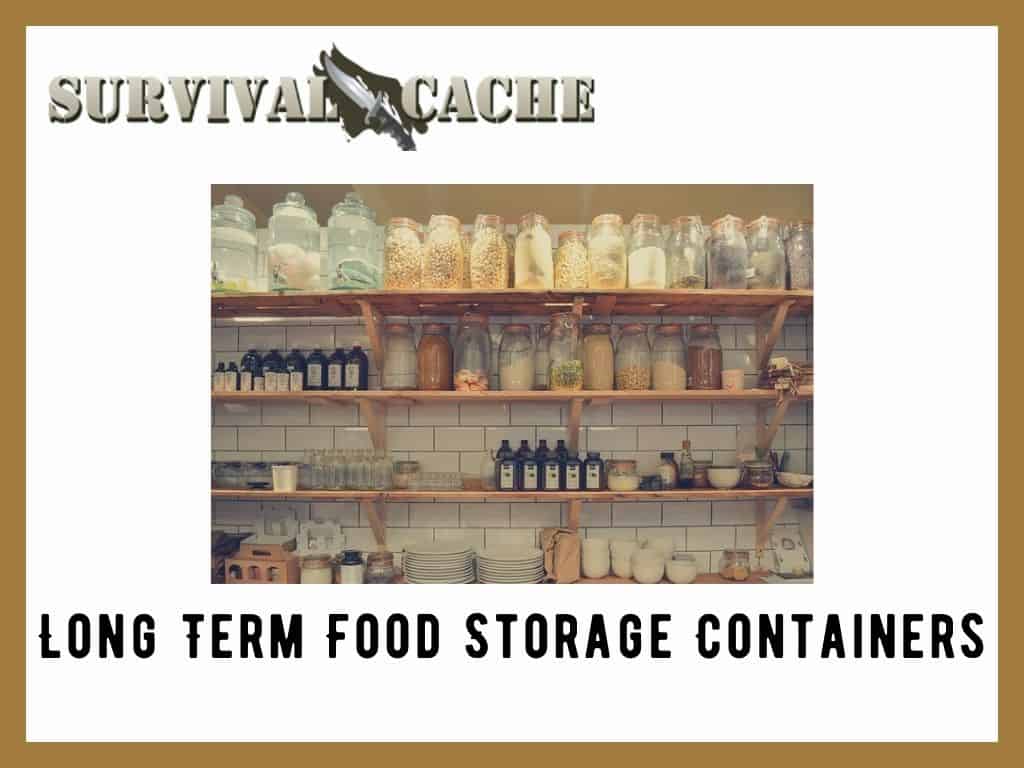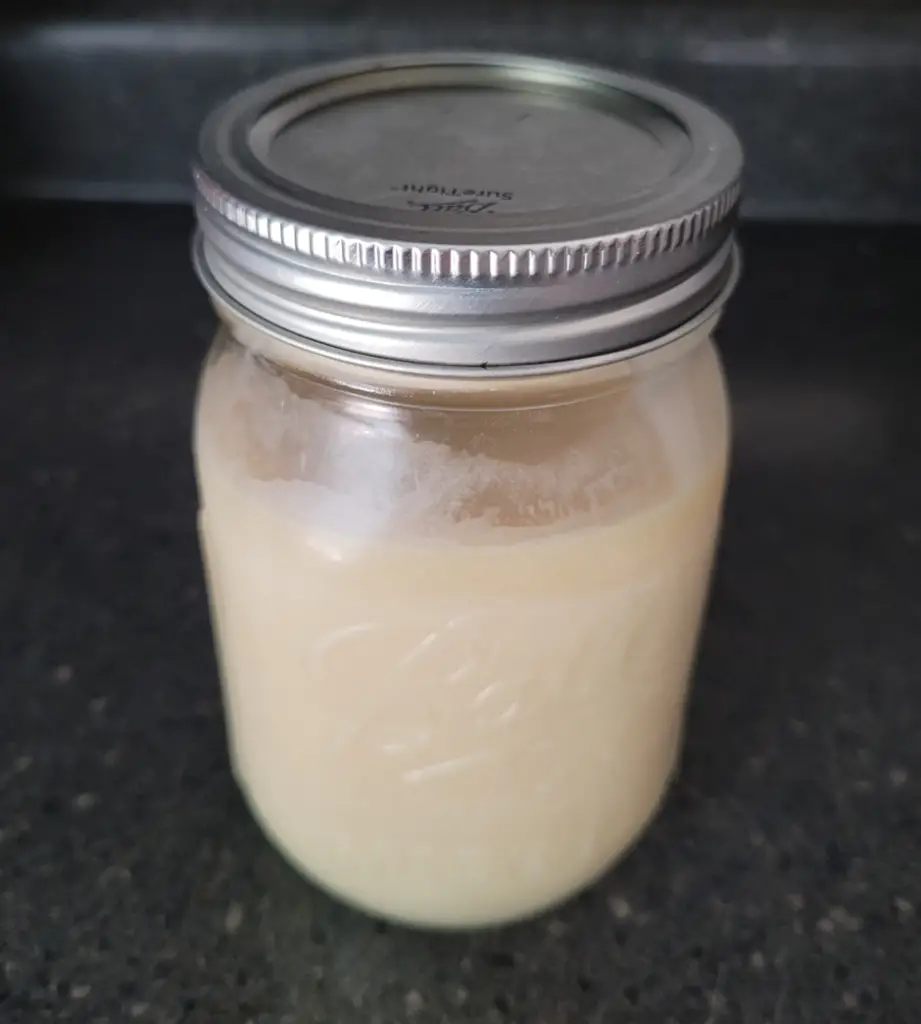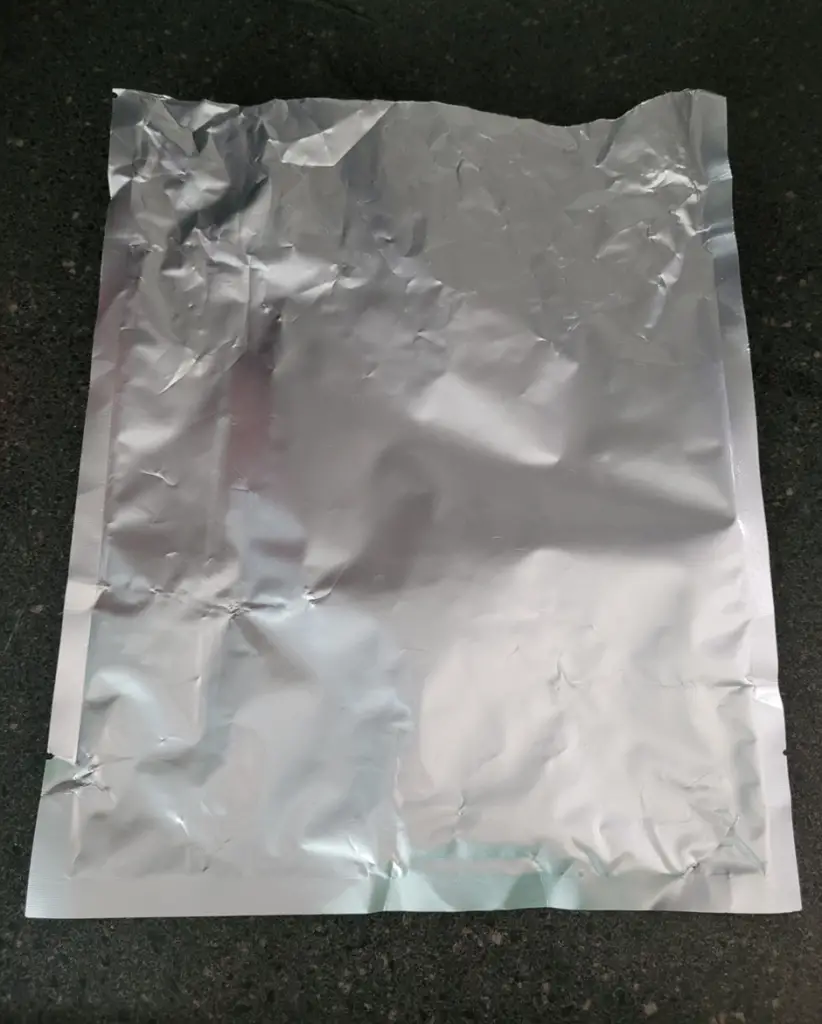Food preservation is one of the most talked-about topics in the prepper community and with good reason.

Modern supply lines today are incredibly fragile, and most people have experienced a food shortage of some degree in their life.
Taking food preservation into your own hands is the most affordable and healthiest option for creating a long term food supply.
But if you are new to prepping or at least to long term food storage, deciding on how to begin this process can be confusing.
While I assure you that the task of preserving food at home is not a difficult one, the containers that food is stored in can make a big difference.
To better understand what makes a storage container great for storing food long term, we’ll be looking at:
- The enemies of a food’s shelf life
- Different types of food storage containers
- What containers to use for different types of foods
What Shortens A Food’s Shelf Life
Air, moisture, and temperature are the three main elements that deteriorate food.
When air, moisture, and temperature are not regulated, a breeding ground for microorganisms is established and food becomes ruined. Only by drastically reducing, slowing down, or eliminating the growth of microorganisms can we hope to preserve food.
How much air and moisture food is exposed to can be regulated with airtight food storage containers.
Temperature can be dealt with by where that food storage container is stored.
Containers should either be stored in refrigerators, freezers, or cool dry locations out of direct sunlight.
Types of Long Term Food Storage Containers
Below is a list of the most popular and effective long term food storage containers:
1. Vacuum Sealers
Vacuum sealers consist primarily of two components: a bag that the food is placed in and a device that both removes the majority of the air and then seals the end of the bag.
Vacuum sealing is an affordable, easy-to-use option that can be used to help preserve a variety of items.
The item you want to preserve is placed into a specialized bag that is then placed under the lid of the sealer. A button is pushed, and most of the air is sucked out. Once the sealer detects that it cannot remove any more air, the end of the bag is sealed.
Some vacuum sealers may also come equipped with attachments that can be used on certain hard containers. Additionally, there are handheld versions that allow you to seal even more specialized bags and containers.
Depending on food and storage conditions, this method can preserve food for several months to years. Keep in mind that plastic by itself is not a complete oxygen barrier.
Note: Vacuumed sealed bags can be used to store ammo.
Canning
Canning is an older and more traditional way of preserving food at home.
There are two different kinds of canning: The boiling and pressure cooking canning methods. Which one you should use depends on the type of food being stored.
Simply put, food is placed into glass jars with screw-down lids that are then cooked in a boil or pressure cooker. This process kills any microorganisms in the food, drives air out of the jar, and creates an airtight seal.
This method of food preservation is favored among people who produce much of their food through gardening, hunting, fishing, and raising livestock. However, many people use store-bought food for home canning as well.
Home canning methods generally keep foods good for about one year to a year and a half. Depending on the food, the recipe used, and storage conditions, canned food can last longer. Another benefit of using mason jars is that, unlike plastic, they do not absorb odors.
While that shelf life is decent, canning is used more for saving excess amounts of food produced, say from a large garden, so that it can be consumed months after the harvest.
Mylar Bags
Mylar bags are another popular choice when preserving food. A mylar bag protects food from moisture, light, and it is an excellent oxygen barrier.
Some of these bags have resealable tops similar to sandwich bags. But a more effective method for storing food long term is to have a mylar sealer. These devices clamp down on the open end of the bag and physically fuse the material, further protecting the contents within.
If you can’t afford a commercial sealer, don’t fret. DIYers have found a much cheaper solution – a flat iron. Yes, a flat iron that is used for hair or even a clothes iron can be used to effectively seal mylar bags.
Often, oxygen absorbers are used in conjunction with mylar bags. Remember that air spoils food, so by placing oxygen absorbers inside the bag before sealing, the remaining oxygen is drastically reduced.
Mylar bags come in several different sizes and thickness so you can make small, travel-sized bags, or you can store bulk foods in five-gallon buckets. Oxygen absorbers also come in different sizes. So, when it comes time to start sealing up your food, be sure to consult an oxygen absorber chart so that you can match up the correct size bag and food item with your oxygen absorbers.
When prepared properly, the food stored inside a mylar bag can remain good for a decade or more. This is because the food inside is in an oxygen-free environment protected against light and moisture.
Buckets
Buckets – usually five-gallon buckets – are a fantastic way to store food in bulk, especially dried foods such as rice, beans, flour, salt, sugar, etc.
Buckets do well in protecting food against, water, air, and light while also providing an extremely durable container that is hard to puncture.
When the foods are placed directly into this type of container and the food will have direct contact with the bucket, then you are going to need to make sure to purchase food grade buckets and not use any old one you find at the local hardware store.
Many plastic buckets are not suited for food storage. While they will provide physical protection, they can leech harmful chemicals into the food.
Buckets can also be used as a secondary container. Food that has been vacuumed sealed or put into mylar bags are often stored in buckets because they keep everything organized, protected, easier to store, and makes transporting food more efficient.
If you want to go the extra mile, top off your buckets with gamma lids. While these lids are more expensive, they are more durable and have better seals than your typical bucket lid.
Note: Plastic buckets can absorb odors. Keep this in mind when choosing your storage location and when refilling the plastic bucket.
Containers By Food Type For Long-Term Storage
Some foods are better suited for certain types of containers and methods. For example, brown rice will last longer when taken out of original packaging and put in storage containers.
Below is a brief list of the most common foods and how they are best stored. No matter what container you use, always write the type of food, sealed date, and expiration dates on the outside of the container.
Vacuum Sealers
Vacuum sealers can be used for both dry and “wet” food like raw meat, but no so much for liquid foods like soup (but I have seen it done). It can also be a bit tricky to use this method for powders like flour. Examples of common items that are vacuum sealed include:
- Rice
- Beans
- Condiments and spices
- Pasta and other dry foods
- Raw meat
- Processed meat
- Dried meat
- Raw vegetables
- Dried vegetables
- Cooked food recipes
- Soups
Note: Some items like raw meat will need to be refrigerated and do best when frozen. An old chest freezer in the garage or basement is perfect to store food long term.
Canning
Canning can be used to store dry goods such as beans and rice, but other foods like soups, jams, sauces, and meats can also be easily canned.
The type of food being canned will determine whether you use the boiling or pressure-cooking method, and you must be sure to use the proper method or else the food can spoil. You will also need a healthy supply of screw-on lids.
Canning is a great way of saving:
- Meats
- Fruits
- Vegetables
- Dry food, beans, rice, ext.
Canning can also be used to create premixed meals or to save homemade foods such as:
- Soups
- Salsas
- Applesauce
- Jams and jellies
- Pickles
- And many more!
Mylar Bags
Mylar bags are best used with foods that have low water content, have been precooked and dried, or just to stock up on pantry staples. Examples of these are:
- Rice
- Flour
- Powdered milk (dry milk)
- Baking powder
- Wheat
- Salt
- Brown sugar
- Rolled oats
- dry beans
- Pasta
- Dehydrated foods
- Jerky
Buckets
Buckets do well in storing dry food as well as liquids. Examples of dry food are:
- Rice
- Beans
- Flour
- Wheat
- Sugar
- Oats
- Pasta
- Other grains and nuts
Examples of liquids that can be store in buckets are:
- Cooking oils
- Syrups
- Honey
As mentioned earlier, buckets are well-suited for also storing items that have been prepackaged in smaller containers, like mylar bags or vacuum-sealed pouches.
Due to their size, buckets do not do well storing items that need to be refrigerated or frozen, unless of course, you have an extremely large freezer.
FAQs About Long Term Food Storage Containers
Is packaging long term food at home more expensive than buying it?
Depending on the brands of materials and food you purchase, it can be. There is an upfront cost in tools like a vacuum sealer or canning system. However, buying food storage containers (and filling them) saves money in the long run because you can purchase bulk foods.
Generally speaking, packaging long term food at home is cheaper.
Is learning to package long term food at home difficult?
Not at all! It will require your time and effort to organize all of the materials and storage but the process itself is very easy. Take it from me, if I can do it, anyone can!
Are containers for storing food long term hard to come by?
There is an ebb and flow to the availability of all products. Some long-term food containers, such as canning supplies, may be seasonal at some stores. This can make them scarcer during certain parts of the year.
Other considerations such as what is going on in the world or the country you live in can have an impact on supply lines. But during normal times, long term food containers are usually readily available where those products are sold.
Can soft containers, like vacuum sealed bags or mylar bags be stored on a shelf or cabinet?
You can store food this way. But doubling up and putting those soft containers inside of hard long term storage containers (like food grade buckets or some type of metal container like a metal garbage can) is better.
A hard container will better protect the bags, keep food safe, and they are rodent-proof.
Can food be stored in plastic containers like water bottles?
To save money, some people do store food, like rice and beans, in plastic bottles. Sometimes they will even throw in oxygen absorber packets. As long as the container is made from food grade plastic, the plastic lids stay secured, and the container is stored properly, then this method should be okay.
Final Thoughts – Long Term Food Storage
What kind of container you choose will depend on the type of food you want to store, available storage, budget, and your time.
Using glass jars for canning is a more traditional method, and it is effective and proven. But it takes the longest to prepare for long term storage. Plus, and maybe it’s just me, but there is something aesthetically pleasing about seeing glass jars lined up in the pantry.
Vacuum sealing and using mylar bags are more common nowadays, and they are highly popular in creating a stock of emergency food or “survival food” – similar to what you see with freeze dried foods.
In the end, no matter what your plan is for food storage, remember that food stays fresh when it is kept in a low-oxygen environment and protected from moisture and temperature.
Hopefully, the above article helps you to decide what container is best for you and your long-term food storage plans.
Thanks for reading, keep your airtight lids secured on your long term food storage containers, and stay prepared!










